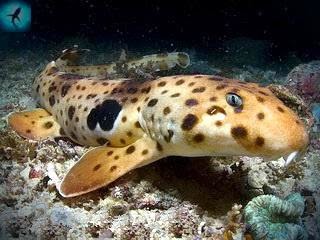 |
| Epaulette Sharks |
Epaulette sharks are a family of sharks that are known for their peculiar mode of locomotion. They are named so because of the large spot that resembles the insignia worn by soldiers of armed forces. These sharks are nocturnal and are usually found in shallow water, sometimes barely reaching a depth sufficient enough to cover their bodies. They are found in Australia, New Guinea and Indonesia, where a new species was discovered recently. As absurd as it may seem, their primary mode of locomotion is walking. They use their pectoral and pelvic fins to waddle on the sea bed. They swim only to escape a threat and always prefer to walk. These sharks have another interesting ability. They are capable of tolerating extremely low oxygen concentrations. These sharks often get caught in tide pools that get separated from the ocean due to the recession of tides. The amount of dissolved oxygen in the water of these isolated pools drops drastically overnight. So how do these sharks survive in such hypoxic conditions? In such situations, they increase their blood supply to the heart and brain and selectively shut down the unnecessary neural functions. They reduce their blood pressure by dilating their blood vessels. Shutting down the metabolism of certain areas of the brain like the motor nuclei, while keeping the sensory nuclei active, keeps them alert and also saves energy. It has been found that these sharks show this hypoxia tolerance even at high temperatures. This is peculiar because most other organisms that can withstand hypoxic conditions can do so only at low temperatures. These sharks, usually less than a 100 centimetres long, can adapt to and survive in hypoxic environments, which to me is equivalent to any super power flaunted by any comic book hero.


















